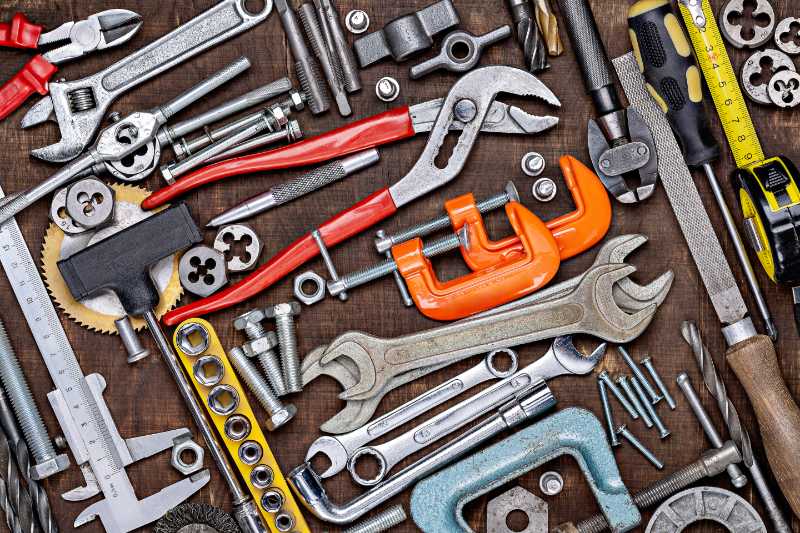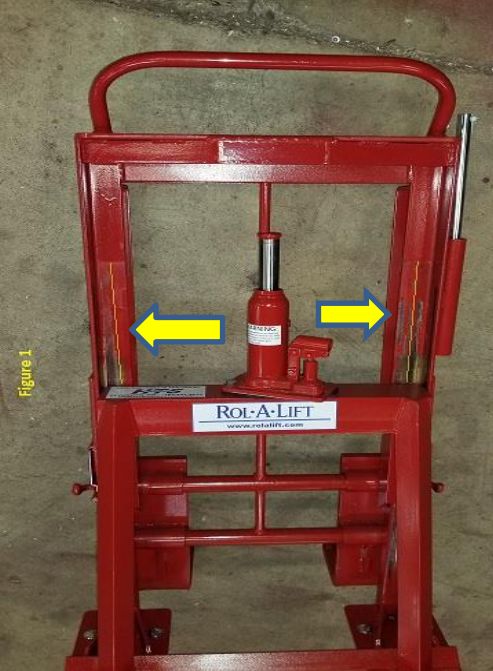Use & Maintenance
How to take care of your rol-a-lift
MAINTENANCE INSTRUCTIONS
If you use and maintain your equipment properly, it will give you many years of service. Follow the maintenance instructions carefully to keep your equipment in good working condition. Never perform any maintenance on the equipment while it is under a load.

INSPECTION
You should inspect the product for damage, wear, broken or missing parts (e.g. pins) and assuring all components function before each use. Follow lubrication and storage instructions for optimum product performance.
BINDING
If the product binds while under a load, use equipment with equal or a larger load capacity to lower the load safely to the ground. After unbinding; clean, lubricate, and test that the equipment is working properly. Rusty components, dirt, or worn parts can be causes of binding. Clean and lubricate the equipment as indicated in the lubrication section. Test the equipment by lifting without a load. If the binding continues, contact Customer Service (763-231-3614).
CLEANING
If the moving parts of the equipment are obstructed, use cleaning solvent or another good degreaser to clean the equipment. Remove any existing rust with a penetrating lubricant.
LUBRICATION
This equipment will not operate safely without proper lubrication. Using the equipment without proper lubrication will result in poor performance and damage to the equipment. Some parts in this equipment are not self-lubricating, inspect the equipment before use and lubricate when necessary. With the help of an additional person, lay the Rol-A-Lift on the ground, with the jack facing up. Extend the slide rail by pulling on the handle exposing the side surfaces. After cleaning, lubricate the slide surface using a lubricating spray or lightly grease.
For light-duty, use lubrication once a month.
For heavy and constant use, lubricate weekly.
NEVER USE SANDPAPER or ABRASIVE MATERIAL ON THESE SURFACES.
RUST PREVENTION
Check ram and pump plungers on the power unit assemblies daily for any signs of rust or corrosion. Without a load, lift the equipment as high as it goes and look under and behind the lifting points. If signs of rust are visible, clean as needed.
GREASE FITTINGS
Some models contain grease fittings that will regularly need to be greased and lubricated. (ie wheel axels and caster swivels)

Use
HOW THE JACK OPERATES
With the release valve closed, an upward stroke of the jack handle draws oil from the reservoir tank into the plunger cavity. Hydraulic pressure holds the valve closed, which keeps the oil in the plunger cavity. Downward strokes of the jack handle release oil into the cylinder, which forces the ram out. This raises the saddle. When the ram reaches maximum extension, oi is bypassed back into the reservoir to prevent an over-extended ram stroke and possible damage to the jack. Opening the release valve allows oil to flow back into the reservoir. This releases hydraulic pressure on the ram, which results in lowering the saddle.
STORING THE JACK
- Lower the lifting arm
- Place the handle in the upright position
- Store in a dry location, indoors recommended
Note: of the jack is stored outdoors, be sure to lubricate all parts before and after use to ensure the jack stays in good working condition.



